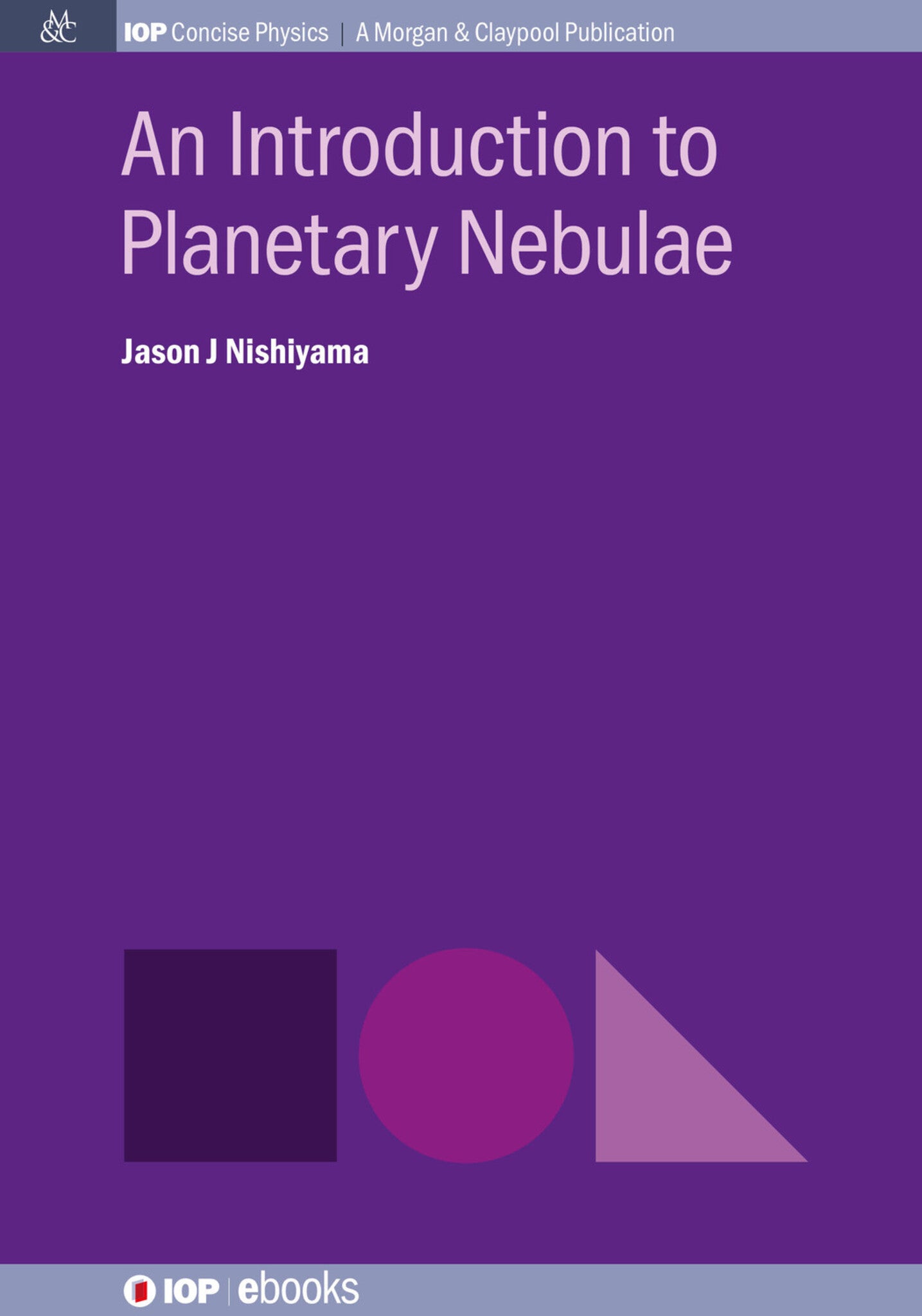We're sorry. An error has occurred
Please cancel or retry.
An Introduction to Planetary Nebulae

Some error occured while loading the Quick View. Please close the Quick View and try reloading the page.
Couldn't load pickup availability
- Format:
-
24 May 2018

In this book we will look at what planetary nebulae are, where they come from and where they go. We will discuss what mechanisms cause these beautiful markers of stellar demise as well as what causes them to form their variety of shapes. How we measure various aspects of planetary nebulae such as what they are made of will also be explored. Although we will give some aspects of planetary nebulae mathematical treatment, the main points should be accessible to people with only a limited background in mathematics.

SCIENCE / Physics / General, Physics, SCIENCE / Physics / Astrophysics, SCIENCE / Physics / Geophysics, Astrophysics, Geophysics

Preface
Acknowledgements
About the author
1 Introduction
1.1 Planetary Nebulae
1.2 Discovery and History
1.2.1 Initial Discovery
1.2.2 Naming
1.2.3 The Road to Understanding
1.2.4 Origins and Fate Revealed
1.2.5 Methods of Discovery
1.3 Components of Planetary Nebulae
1.3.1 Nebular Envelope
1.3.2 Central Star
Bibliography
2 Formation of Planetary Nebulae
2.1 Planetary Nebulae as a Stage in Stellar Evolution
2.1.1 Hertzsprung-Russell Diagram
2.1.2 Stellar Evolution - Main Sequence to the AGB
2.1.3 Evolution to the Asymptotic Giant Branch
2.1.4 The Asymptotic Giant Branch
2.1.5 Mass Loss
2.2 Proto-planetary Nebulae
2.2.1 Morphology
2.3 Progenitor masses
2.3.1 Calculation of white dwarf mass
2.3.2 Calculation of progenitor mass
2.3.3 Fate Outside of the Bounds
2.4 Post Planetary Nebula
2.4.1 White Dwarf Physical Characteristics
2.4.2 White Dwarf Observational and Chemical Characteristics
2.5 Interacting Stellar Winds
2.5.1 The Model
2.5.2 Limitations of the Model
Bibliography
3 Observational Data of Planetary Nebulae
3.1 Chemical Abundance
3.1.1 Observed Abundance
3.1.2 Galactic Chemical Gradient
3.1.3 Galactic Chemical Enrichment
3.2 Distance Determination
3.2.1 Difficulties in Determining Distance
3.2.2 Techniques for Determining Distance
Bibliography
4 Planetary Nebula Morphology
4.1 Classifying Planetary Nebulae
4.1.1 Chemical Classification
4.1.2 Morphological Classification
4.2 Morphology, Classification and Planetary Nebulae Evolution
4.2.1 Morphology and Planetary Nebulae Abundance
4.2.2 Morphology and Progenitor Star Mass
4.3 Explaining Morphology
4.3.1 Round Morphology
4.3.2 Elliptical Morphology
4.3.3 Bipolar Morphology
4.3.4 Point Symmetric Morphology
4.4 Concluding Remarks
Bibliography
Glossary
Symbols



